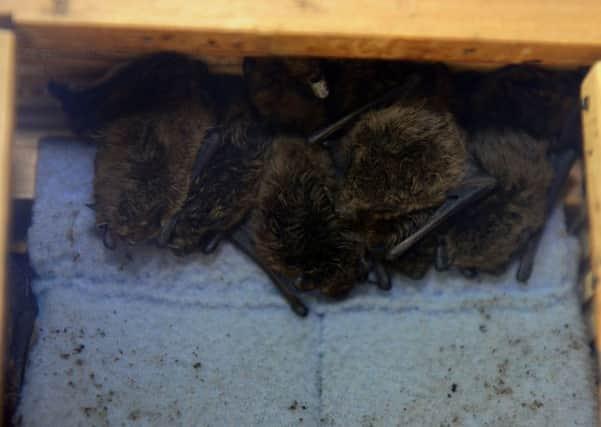Country & Coast: Bats


For the past few summers a small colony of what I believe to be common pipistrelles has been established in my home - or, to be more specific, on its exterior - squeezed between the cladding in the eaves and the gable end. The bats gave away their presence by faecal droppings falling onto the window sills below. I consider this a small price to pay for the opportunity to watch them hawk for small insects each evening.
The common pipistrelle is probably Yorkshire’s most widespread and numerous species of bat, and in the UK its total population is estimated at nearly 2.5 million. To form its breeding roosts it finds the merest crevice even in the well maintained modern houses of suburbia, a skill which almost certainly has been the species’ saving. Pipistrelles were once found mainly in old farm buildings and suffered a dramatic decline in the second half of the 20th century, when farms were modernised and many ramshackle barns and byres were demolished. However, recent counts by the Bat Conservation Trust have shown a significant population increase.
Advertisement
Hide AdAdvertisement
Hide AdAll bats are protected by UK and European law, so it is illegal to disturb or harm a bat roost. This has caused considerable inconvenience in Yorkshire in the recent past because, in planning-speak, the presence of a protected species is a “material consideration”. Any work can only begin if Natural England issues a license.
Perhaps the greatest trouble they have caused was experienced at the town of Bingley, where the 300-year-old Ireland Bridge - one of just a few crossings of the River Aire between Keighley and Shipley - was closed because a colony of rare Daubenton’s bats were residing in the parapet.
Before repair work went ahead, the bats had to be moved to special bat boxes beside the river, and the closure meant lengthy detours for people living in villages across the bridge. When work was completed the bats returned to their roost inside the bridge.
In the North York Moors hamlet of Ellerburn, near Thornton-le-Dale, the small Saxon church of St Hilda’s had to close when some rare brown long-eared and Natterer’s bats took up residence in rafters above the nave and chancel. The ammonia-like smell from their urine was overpowering, and the congregation’s tolerance of all creatures great and small finally snapped after a visit by the Diocesan bishop, when the stench caused his wife to become ill. Work has since been done to seal the interior, confining the bats to the roof, and at Christmas St Hilda’s held its first carol service for 15 years.